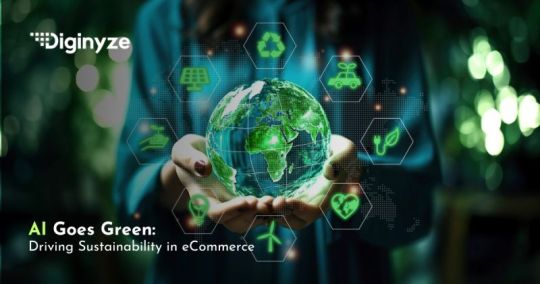#greenrevolution
Text












Mandala's Notebooks, 2023
more often than desired, artists pass through a creative blockage which can be quite nerve racking.
for those moments in time, sacred geometry comes to the rescue and allows my mind not to be so frustrated with the lack of production as well as new recycled projects.
this intention became clear in 2016, by recycling old and unused\unwanted notebooks and giving them a new original and unique face. hand dawned and painted, for A5 and A4 formats, lined, chequered or plain depending on the design.
some are already sold but most are looking for a new owner. if you connect with them, leave a comment and i'll get back to you asap ^^
hope you enjoy this outbursts of colour*
PS: presenting final projects available soon ^^
#mandalaart#sacred geometry#portugal#naturelovers#originalartwork#balluprojects#recycledart#handmade#process#deconstruction#art block#eyes#greenrevolution#arts and crafts#notebooks
22 notes
·
View notes
Text
Embrace Green Technology: Our Bridge to a Sustainable Tomorrow 🌍
In a world at the crossroads of environmental challenges, green technology is our beacon of hope. It's not just a want; it's a need. Join us in the journey towards a cleaner, healthier, and more sustainable future. 💚
#greentech#sustainability#cleanenergy#ecofriendly#climateaction#renewablefuture#earthcare#gogreen#environmentalimpact#greeninnovation#planetprotection#earth#greentechnology#savetheplanet#sustainableliving#climatesolutions#planet#greenrevolution#futureisgreen#geohoneylover
15 notes
·
View notes
Text

🌟 Don't Settle for Net Zero Emissions – Climate-Positive Is the New Standard https://www.energysustainableworld.info/2022/12/dont-settle-for-net-zero-emissions.html
2 notes
·
View notes
Text

Green Hydrogen Economy
Growing at a 61.0% CAGR, the green hydrogen market is projected to reach $7,314 million by 2027. The transportation sector is projected to hold a USD 4,550 million value share in the green hydrogen market by 2027, growing at a compound annual growth rate (CAGR) of 63.4% from its 58% value share in 2022. Forecasts indicate that the power industry would grow at the second-highest rate possible, or 63.0%, from USD 88.5 million in 2022 to USD 1018 million by 2027. Over the course of the projection period, it is expected that the development of electrolysis technologies, the falling cost of producing renewable energy from all sources, the growing demand from FCEVs and the power industry, among other reasons, will drive market expansion. Wind-powered green hydrogen has the largest market share in the global green hydrogen market. The mobility end-use industry dominated the global green hydrogen market.
Download- https://www.marketsandmarkets.com/pdfdownloadNew.asp?id=92444177
IMPACT OF GREEN HYDROGEN
Green hydrogen has the potential to make a significant impact on various sectors and industries, including:
Energy: Green hydrogen has the potential to decrease dependence on fossil fuels and raise the proportion of renewable energy sources in the energy mix. It can offer a dependable, steady energy supply that is portable across great distances.
Transportation: Transportation vehicles such as cars, buses, trains, and even airplanes can run on green hydrogen as fuel. It can improve energy security and aid in the reduction of greenhouse gas emissions and air pollution.
Industry: Green hydrogen can take the role of fossil fuels in a number of industrial processes, including the manufacturing of chemicals, steel, and refinement. It can enhance the sustainability of industrial processes and aid in the reduction of greenhouse gas emissions.
Agriculture: Fertilizers, which are necessary for contemporary agriculture, can be made from green hydrogen. It can enhance agricultural sustainability and lessen dependency on fertilizers derived from fossil fuels.
Climate change: Green hydrogen has the potential to significantly lessen the effects of climate change by cutting greenhouse gas emissions and raising the proportion of renewable energy in the energy mix.
However, there are also some challenges in green hydrogen economy associated with the adoption of green hydrogen, including:
Cost: Because of the low electrolysis efficiency and high cost of renewable energy sources, green hydrogen is now more expensive than hydrogen derived from fossil fuels.
Infrastructure: Infrastructure projects involving production sites, storage tanks, and transportation networks must be funded in large quantities if green hydrogen is to be widely used.
Scale: To fulfill the increasing demand, the production of green hydrogen must be scaled up, which will require considerable investments. Currently, the scale of green hydrogen production is quite limited.
Efficiency: Higher energy consumption and expenses are the outcome of the comparatively low efficiency of electrolysis, which is the process used to make green hydrogen.
Competition: The market potential of green hydrogen may be constrained by competition from other clean energy sources like renewable energy and battery storage.
Technological Developments in Green Hydrogen Production
Growing awareness of the potential of green hydrogen and the growing demand for clean energy are driving the rapid evolution of technological advancements in the production of green hydrogen. The following are a few recent technological advancements in the production of green hydrogen:
Electrolysis Technology: An efficient and economical way to produce green hydrogen is by electrolysis, which is becoming more and more popular due to technological developments in the field. The energy consumption and cost of electrolysis are being reduced by developments in electrolyzer materials and designs, as well as in system integration and control.
Renewable Energy Integration: The availability of renewable energy sources like solar and wind power is closely related to the creation of green hydrogen. The efficiency and dependability of renewable energy systems are rising due to recent technological developments in renewable energy integration, which in turn is improving the efficiency and economics of green hydrogen production.
Green Hydrogen Storage: One major obstacle for green hydrogen is cost-effective and efficient storage, however new developments in technology are making storage solutions more affordable and efficient. The capacity and adaptability of green hydrogen storage are growing because to new storage technologies including hydrogen carriers and subterranean hydrogen storage facilities.
Carbon Capture and Utilization: A crucial technology in the decarbonization of industries, carbon capture, utilization, and storage (CCUS) is being used more and more in the creation of green hydrogen. The production of green hydrogen is made even more environmentally beneficial by the use of CCUS technology, which enables the capture and storage of carbon dioxide emissions.
Green Hydrogen Infrastructure: A comparable infrastructure must be in place to facilitate the rise of green hydrogen. The creation of massive green hydrogen production facilities, the development of new pipeline networks, and the integration of green hydrogen into current energy systems are examples of recent technological advancements in green hydrogen infrastructure.
Leading players in Green Hydrogen Economy
Some of the leading players in the green hydrogen industry are:
Air Liquide: A French business that serves numerous sectors by offering industrial gases and other products. Offering solutions for hydrogen production and delivery, it has a major position in the green hydrogen industry.
Linde: An international provider of industrial gas services and products to a range of sectors. Linde is focused on building hydrogen infrastructure and has made investments in green hydrogen initiatives.
Siemens Energy: An organization based in Germany that offers energy solutions to different sectors. It is working on developing green hydrogen generation and storage technologies, among other hydrogen-related technologies.
ITM Power: A UK-based business that creates green hydrogen production systems and other integrated hydrogen energy solutions.
Nel Hydrogen: A Norwegian business that offers hydrogen production, delivery, and storage options. With its electrolysis method for hydrogen production, it has a major position in the green hydrogen business.
Plug Power: A US-based business that offers stationary power and transportation applications among its many hydrogen fuel cell uses. It works on creating green hydrogen solutions for several sectors of the economy.
Ballard Power Systems: A Canadian business that offers fuel cell systems for stationary power and mobility, among other uses. It works to lower the cost of hydrogen fuel cells and is engaged in the development of green hydrogen technology.
McPhy Energy: A French business that offers systems for the generation, distribution, and storage of hydrogen. It is attempting to lower the cost of producing hydrogen and is engaged in the development of green hydrogen technology.
Enapter: Based on anion exchange membrane technology, this German company offers solutions for hydrogen production. Green hydrogen solutions, including stationary power and mobility, are being developed by this organization.
Green Hydrogen Systems: A Danish business offering hydrogen generating technologies based on electrolysis. It is engaged in the creation of green hydrogen technologies and is attempting to bring down the price of producing hydrogen.
STRENGTHS AND LIMITATIONS OF GREEN HYDROGEN
Strengths of Green Hydrogen:
Renewable: Green hydrogen is a sustainable energy source that doesn't increase greenhouse gas emissions because it is made using renewable energy sources like solar, wind, or hydropower.
Versatile: Green hydrogen is a multipurpose energy source that can be utilized as fuel for industry, transportation, and heating.
Energy Storage: Managing the erratic nature of renewable energy sources like solar and wind power requires the usage of energy storage solutions, such as hydrogen.
High Energy Density: Green hydrogen has a lot of energy per unit of weight or volume, making it have a high energy density.
Clean: Hydrogen is a clean and environmentally friendly energy source because its only byproduct is water.
Limitations of Green Hydrogen:
Cost: Green hydrogen production is now less economically viable due to its high cost when compared to traditional fossil fuel-based energy options.
Infrastructure: The infrastructure for hydrogen generation, distribution, and storage is currently lacking, which makes it difficult to increase the usage of green hydrogen.
Efficiency: Because of the low process efficiency, a large quantity of energy is needed to produce a tiny amount of hydrogen. This is known as green hydrogen production.
Safety: The cost and complexity of using hydrogen as an energy solution can increase due to its high flammability and the need for specific safety precautions during production, transit, and storage.
Carbon Intensity of Grey Hydrogen: Grey hydrogen, which is produced by using fossil fuels, is far more carbon-intensive and emits a lot of greenhouse gases than green hydrogen, while being a clean energy source.
Green hydrogen technologies
In contrast to conventional fossil fuel-based approaches, green hydrogen technologies refer to the several techniques and procedures used to manufacture hydrogen using renewable energy sources, such as wind, solar, and hydro power.
Some of the key green hydrogen technologies include:
Electrolysis: Using an electric current, water molecules are split into hydrogen and oxygen during the process of electrolysis. This procedure is referred to as a "green hydrogen production method" when it is fuelled by renewable energy sources like solar or wind.
Biomass gasification: This technique turns organic materials into a gas that can be utilized to create hydrogen, such as wood chips or agricultural waste. This process may alternatively be referred to as a "green hydrogen production method" if the organic matter is obtained responsibly and renewable energy sources are used to power the gasification process.
Solar thermochemical: Utilizing concentrated solar energy, this technique raises the temperature to a point where water molecules can split into hydrogen and oxygen. Although this process is currently in the research and development phase, it has the potential to be a very effective and environmentally friendly way to produce hydrogen.
Algae production: Hydrogen can be extracted from algae by harvesting them, which can be grown with carbon dioxide emissions and sunshine.
Waste-to-hydrogen: Hydrogen can be created by the processing of certain waste products, such as sewage and landfill gas. Although this process is still in its infancy, it has the potential to be a green method of producing hydrogen that contributes to waste reduction and the reduction of greenhouse gas emissions.
Green hydrogen technology and the green hydrogen economy are anticipated to become more and more significant in the world's energy mix as the demand for renewable energy sources rises.
HYDROGEN AS CLEAN ENERGY
Meeting the world's climate goals might be greatly aided by the growing use of hydrogen, a clean, sustainable energy source. Energy carriers that are adaptable in nature can be created using a variety of low-carbon sources, including fossil fuels with carbon capture and storage (CCS), nuclear energy, and renewable energy sources including solar, wind, and hydro.
When burned or utilized in fuel cells to generate power, hydrogen produces no carbon dioxide (CO2) or other hazardous pollutants, in contrast to conventional fossil fuels. Consequently, it has drawn interest as a possible replacement for fossil fuels, especially for industries and sectors like heavy transportation, heating, and manufacturing that are challenging to decarbonize.
Applications for hydrogen as a fuel include electricity generation (fuel cells), industry (chemicals, refining, and steel production), and transportation (cars, buses, trucks, and trains). Green hydrogen is the purest form of hydrogen when it is created from sustainable resources. Green hydrogen has the potential to function as a renewable energy storage medium, mitigating the variability of solar and wind power.
At the moment, manufacturing hydrogen from green sources is more costly than producing hydrogen from conventional fuels. On the other hand, the cost of green hydrogen is anticipated to approach parity with fossil fuels in the upcoming years as the cost of renewable energy continues to decline and advances in hydrogen manufacturing technology. Hydrogen has the potential to play a big part in the energy transition as people search for greener, more sustainable energy options to cut carbon emissions and fight climate change.
Green hydrogen energy solutions
Green hydrogen energy solutions are a new category of renewable energy technologies that power different applications with hydrogen generated from renewable sources like sun, wind, and hydropower. Electrolysis, a process that uses renewable electricity to separate water molecules into hydrogen and oxygen, is how green hydrogen is created.
The potential of green hydrogen to decarbonize hard-to-electrify industries including heavy industrial, transportation, and heating is one of its main benefits. Green hydrogen can be used as a feedstock for chemical reactions, as fuel for fuel cell vehicles, or in substitution of fossil fuels in industrial processes like cement and steel manufacturing.
In addition to these advantages, green hydrogen energy solutions also provide higher energy security, better air quality, and the creation of jobs in the clean energy sector.
Hydrogen Renewable Energy
The creation of hydrogen as an energy carrier by renewable energy sources, such as solar, wind, hydropower, or other clean and sustainable energy sources, is referred to as "hydrogen renewable energy" in general. "Green hydrogen" production is the term used to describe the process of manufacturing hydrogen with renewable energy.
Green Hydrogen Potential
"Green hydrogen potential" is the amount of energy that can be produced by the "green hydrogen" production process, which includes generating hydrogen and oxygen from water using electrolysis powered by renewable energy sources.
Green Hydrogen Premium Use Cases
The expression "green hydrogen premium use cases" describes particular situations or applications in which using green hydrogen which is created using environmentally friendly processes offers special advantages over other hydrogen production methods. Because of its environmental sustainability and possibly better qualities in some applications, the "premium" feature usually denotes a higher value or attractiveness connected with the green hydrogen.
Green Hydrogen Gas
"Green hydrogen gas" is the term used to describe hydrogen gas generated by the "green hydrogen" production process, which produces hydrogen and oxygen from water by electrolyzing it with the help of renewable energy sources. The production method is considered "green" because it uses clean, renewable energy, usually from hydropower, solar, or wind power. This indicates that the process is environmentally sustainable. Hydrogen derived from fossil fuels is thought to be dirty and emits less carbon than green hydrogen gas.
Hydrogen Upstream Companies
"Hydrogen upstream companies" are enterprises that are primarily engaged in the production, extraction, and processing of hydrogen feedstocks, and are situated at the early stages of the hydrogen value chain.
Harnessing Green Hydrogen
"Harnessing green hydrogen" is the process of obtaining and making use of hydrogen gas produced in an environmentally sustainable manner, frequently with the help of renewable energy sources. Using energy, usually from renewable sources like solar, wind, or hydropower, water is divided into hydrogen and oxygen through a process known as electrolysis to produce green hydrogen.
Green Hydrogen Systems
"Green hydrogen systems" are integrated systems or networks developed to generate, store, and use hydrogen gas in an environmentally responsible manner, usually with the help of renewable energy sources. A low-carbon energy sector shift can be supported and environmental impact can be minimized by focusing on the full hydrogen lifecycle, from production to end-use applications.
Green Hydrogen Electrolysis
The term "green hydrogen electrolysis" describes the electrolysis method of splitting water into hydrogen and oxygen using electricity produced from renewable energy sources. Because this process produces pure, or "green," hydrogen instead of using fossil fuels, it is regarded as environmentally sustainable.
Green Hydrogen Business Opportunities
"Green hydrogen business opportunities" encompass a range of financial potential and pathways for investment, growth, and innovation within the nascent green hydrogen sector. Green hydrogen generation, distribution, and consumption present businesses with opportunities as the need for low-carbon and sustainable energy solutions grows.
Green Hydrogen Process
"Green hydrogen process" describes a low-carbon, environmentally friendly technique of manufacturing hydrogen gas, usually with the use of renewable energy sources. In order to contribute to the larger goals of clean and sustainable energy, the green hydrogen process aims to reduce or eliminate greenhouse gas emissions related to the manufacturing of hydrogen.
Green Hydrogen Fuel
Hydrogen gas produced using ecologically friendly processes, usually with the help of renewable energy sources, is referred to as "green hydrogen fuel". When hydrogen is produced in a "green" manner, it means that no fossil fuels are used and that the carbon footprint is kept to a minimum. Green hydrogen fuel can be used in place of traditional fuels in a variety of applications as a clean, renewable energy source to help cut down on greenhouse gas emissions.
Hydrogen Downstream Companies
"Hydrogen downstream companies" often denote enterprises and organizations that operate in the later phases of the hydrogen value chain, with an emphasis on distributing, storing, and applying hydrogen for diverse purposes. In the context of the hydrogen business, the phrase "downstream" refers to activities that take place following the manufacture of the primary product; it is a term adopted from the oil and gas sector.
Green h2
The term "green hydrogen" is often shortened to "green H2." Green hydrogen is hydrogen that has been produced with consideration for the environment. It is usually produced by electrolysis, which is fueled by renewable energy sources. Hydrogen is represented chemically by the letter "H2".
Business Opportunities in Green Hydrogen
Potential paths for financial expansion, investment, and innovation in the developing green hydrogen sector are referred to as "business opportunities in green hydrogen". There are a number of opportunities in the green hydrogen market for companies at different phases of the value chain, as efforts to decarbonize and switch to sustainable energy sources gain momentum globally.
Green Hydrogen Uses
The term "green hydrogen uses" describes the range of industries and applications in which green hydrogen which is produced in an ecologically responsible manner is used as a flexible and clean energy source. The phrase highlights how environmentally benign the process of producing hydrogen is, which usually involves electrolysis using renewable energy sources.
Electrolyzer Technologies
The term "electrolyzer technologies" describes the range of systems and technologies utilized in the electrolysis process, which is a technique for producing hydrogen gas by utilizing an electric current to divide water (H2O) into hydrogen (H₂) and oxygen (O₂).
World Energy gh2
This phrase usually refers to the entire amount of energy produced and consumed worldwide. It includes a range of energy sources, including nuclear energy, renewable energy (like solar, wind, and hydropower), fossil fuels (such coal, oil, and natural gas), and others. Green hydrogen is usually referred to as "green H2". Using an electrical process known as electrolysis, water (H2O) is split into hydrogen (H₂) and oxygen (O₂) to generate green hydrogen.
Green Hydrogen Trends
"Green hydrogen trends" include the current advancements, changes, and patterns in the fields of green hydrogen generation, technology, and application. As an essential component of the global drive to shift to a more sustainable and low-carbon energy system, these trends indicate how the field of green hydrogen is developing.
Hydrogen Business Models
The term "hydrogen business models" describes the range of methods and tactics used by companies in the hydrogen sector in order to produce income, add value, and maintain their operations. These models include a broad spectrum of hydrogen-related operations, including production, delivery, storage, and use. Various business models arise in response to market demands, technological breakthroughs, and regulatory frameworks as the hydrogen sector undergoes evolution.
Green Hydrogen Generation
"Green hydrogen generation" is the term used to describe the environmentally sustainable and renewable energy-based method of producing hydrogen gas. The word "green" sets this technology apart from conventional methods of producing hydrogen, which frequently entail the burning of fossil fuels. Renewable energy sources like sun, wind, or hydropower are the main energy source for the hydrogen synthesis process in green hydrogen generation.
Green Hydrogen Future
"Green Hydrogen Future" describes how green hydrogen is expected to develop and play a part in the world's energy system going forward. It includes projections, patterns, and future advances concerning the creation, application, and transfer of green hydrogen. Reducing carbon emissions, attaining sustainability, and switching to a greener, more sustainable energy system are all directly related to the idea.
A "green hydrogen future" is a potential state of affairs in which hydrogen produced by electrolysis fueled by renewable energy sources plays a major role in fostering a low-carbon and sustainable economy. In this futuristic vision, the decarbonization of several industries, including transportation, manufacturing, and energy production, is largely dependent on green hydrogen. It signifies a move away from greenhouse gas-emitting fossil fuel-based hydrogen generation techniques and toward a greener, more sustainable substitute. To fully realize the potential of hydrogen as a flexible and carbon-neutral energy carrier, developments in electrolysis technology, infrastructure development for hydrogen, supportive policies, and enhanced stakeholder collaboration are all necessary components of the green hydrogen future.
The "Green Hydrogen Future" is a comprehensive plan for moving toward a sustainable and eco-friendly hydrogen-based economy. The following are some salient features and ramifications of this vision:
Renewable Energy Integration: With the use of electrolysis and sustainable energy sources like solar, wind, or hydroelectric power, green hydrogen is created. By resolving the issue of intermittency and easing the transition to a more dependable and sustainable energy system, this integration makes it possible to store and use excess renewable energy.
Decarbonization: The urgent need to decarbonize the transportation, industrial, and heating sectors of the economy is one of the main forces behind the green hydrogen future. Greenhouse gas emissions can be greatly decreased by switching to green hydrogen from fossil fuels, aiding in the worldwide effort to slow down climate change and reach net-zero carbon emissions.
Energy Storage and Grid Stability: Green hydrogen has the potential to be a flexible energy carrier and storage medium that can help the electrical grid balance supply and demand. When demand is low, excess renewable energy can be used to make hydrogen, which can then be used directly in fuel cells or converted back into electricity when demand is high. This flexibility improves the stability and dependability of the grid, especially as renewable energy sources proliferate.
Industrial Applications: There are several industrial uses for green hydrogen, such as chemical synthesis, steel production, and ammonia generation. These sectors can drastically lower their carbon footprint and environmental impact by switching to green hydrogen instead of fossil fuels or hydrogen made from natural gas (often referred to as "grey hydrogen").
Transportation: Green hydrogen is an environmentally friendly fuel that can be used for buses, trucks, trains, and fuel cell vehicles (FCVs). While conventional vehicles release pollutants from their internal combustion engines, FCVs produce no emissions at all; the only byproduct of hydrogen combustion is water vapor.
Global Energy Transition: Global energy transition might be accelerated by the green hydrogen future, which would offer clean and sustainable energy to all nations. Realizing this ambition and tackling the common challenge of climate change on a global scale depend on building a strong green hydrogen infrastructure and encouraging international cooperation.
Ultimately, the green hydrogen future offers a way forward for a more resilient and sustainable energy system that puts social welfare and environmental preservation first. It signifies a paradigm shift in the production, storage, and use of energy. However, in order to overcome technological, financial, and legal obstacles and hasten the shift to a hydrogen-based economy, governments, businesses, and society at large will need to work together in order to realize this goal.
Green Hydrogen Opportunities
The term "green hydrogen opportunities" describes the advantageous circumstances, opportunities, and growth paths found in the green hydrogen industry. These prospects are brought about by a number of factors, such as the worldwide push for low-carbon and sustainable energy solutions, supportive legislation, market demand, and technological breakthroughs. Businesses, financiers, and other interested parties should investigate these chances to support the development and uptake of green hydrogen as a flexible and clean energy source.
Green hydrogen energy options are anticipated to become more significant as the globe moves toward a more sustainable energy future. Targeting net-zero emissions and mitigating the effects of climate change, numerous nations and businesses worldwide are investing in the advancement of green hydrogen technologies within the framework of a green hydrogen economy.
Fundamentally, clean, renewable energy sources such as green hydrogen energy solutions offer a way out of fossil fuels and toward a more just and sustainable energy future for all.
Read More-https://www.marketsandmarkets.com/industry-practice/hydrogen/green-hydrogen
#GreenHydrogen#RenewableEnergy#CleanEnergyFuture#HydrogenEconomy#SustainableTech#ClimateAction#ZeroEmissions#GreenRevolution#CleanFuel
0 notes
Text
Aradhaya Food Recycle - Pioneers in Cattle Feed Manufacturing

Introduction to Aradhaya Food Recycle
Aradhaya Food Recycle is a trailblazer in the field of cattle feed manufacturing. Established with the vision of promoting sustainable agriculture practices, this company has quickly risen to prominence for its dedication to quality, innovation, and environmental responsibility.
The Philosophy Behind Aradhaya Food Recycle
At the heart of Aradhaya Food Recycle’s ethos lies a deep-seated commitment to sustainability. The company believes in utilizing resources efficiently while minimizing waste. By repurposing organic materials into high-quality cattle feed manufacturing, Aradhaya Food Recycle not only reduces environmental impact but also contributes to the circular economy.
Innovative Manufacturing Process
What sets Aradhaya Food Recycle apart is its innovative manufacturing process. Unlike traditional methods that rely heavily on synthetic additives and preservatives, Aradhaya Food Recycle harnesses the power of natural ingredients to create nutritious and wholesome cattle feed. By carefully selecting and processing organic materials, the company ensures that its products are free from harmful chemicals and additives.
Quality Assurance
Aradhaya Food Recycle places utmost importance on quality assurance. Every batch of cattle feed undergoes rigorous testing to ensure compliance with the highest industry standards. From sourcing raw materials to the final packaging, the company maintains strict quality control measures to guarantee the safety and efficacy of its products.
Environmental Impact
One of the most significant contributions of Aradhaya Food Recycle is its positive impact on the environment. By diverting organic waste from landfills and repurposing it into valuable cattle feed manufacturing, the company helps reduce greenhouse gas emissions and alleviate pressure on natural resources. Additionally, the use of sustainable farming practices promotes biodiversity and soil health, further enhancing the ecological footprint of agriculture.
Community Engagement
Aradhaya Food Recycle is deeply invested in community engagement and empowerment. The company actively collaborates with local farmers and agricultural cooperatives to promote sustainable farming practices and improve livelihoods. Through training programs and knowledge sharing initiatives, Aradhaya Food Recycle empowers farmers to adopt eco-friendly techniques that enhance productivity and profitability.
Looking Towards the Future
As the demand for sustainable agricultural solutions continues to rise, Aradhaya Food Recycle remains at the forefront of innovation. The company is committed to ongoing research and development, exploring new avenues to optimize its manufacturing processes and expand its product offerings. With a focus on sustainability, quality, and community impact, Aradhaya Food Recycle is poised to shape the future of agriculture for generations to come.
Conclusion
In a world where environmental sustainability is paramount, Aradhaya Food Recycle stands as a beacon of hope. Through its pioneering efforts in cattle feed manufacturing, the company not only supports the agricultural industry but also fosters a healthier planet for future generations. With its unwavering commitment to sustainability and innovation, Aradhaya Food Recycle is truly revolutionizing agriculture, one feed at a time.
#SustainableAgriculture#CattleFeed#EnvironmentalResponsibility#FarmersEmpowerment#CircularEconomy#InnovationInFarming#QualityFeed#CommunityEngagement#GreenRevolution#FutureOfAgriculture
1 note
·
View note
Text

Embrace the power of Militant Organic foods for a healthier, sustainable future! With a fierce commitment to purity and sustainability, Militant Organic options ensure your plate is free from harmful chemicals and pesticides. Experience the taste of victory with every bite as you support ethical farming practices and environmental stewardship. Join the revolution for a greener tomorrow!
Learn more at https://foodandthought2.com/
0 notes
Text

Solar panels aren’t just about saving money, they’re a long-term investment in a greener future. ☀️
Join the solar revolution & make a difference.
#sustainableliving#solarpower#gogreen#UmangotSolar#RenewableEnergy#CleanEnergy#SustainableLiving#SolarSavingsm#GreenRevolution
0 notes
Text
AI Goes Green: Driving Sustainability in eCommerce
Turning green dreams into digital realities! With Diginyze, sustainability meets innovation.
We're harnessing AI to usher in a new era of eCommerce - one that's kinder to our planet.
From reducing waste to optimizing operations, find out how we're doing it in our latest blog.
Full story here: https://www.diginyze.com/blog/ai-goes-green-driving-sustainability-in-ecommerce/

#SustainableEcommerce#AIGoesGreen#Sustainability#EcoFriendlyBusiness#AIinEcommerce#SustainabilityRevolution#EcommerceInnovation#AIForSustainability#DigitalTransformation#SmartEcommerce#SustainableFuture#EcoFriendlyAI#ClimateSmartCommerce#SustainableSupplyChain#AIInnovation#SustainableOperations#GreenRevolution#EcommerceTrends#GreenEcommerce#AIforGood#Artificialintelligence#dx#ecommerceplatform#estore#AI#eCommerce
0 notes
Text

Do you want to take your golf cart to the next level? Connect with #BSLBATT to upgrade to a lithium battery to enhance golf cart performance and achieve a smoother ride.
Lighter, more compact, and more durable lithium batteries make your golf cart run longer!
Longer service life and energy efficiency allow you to experience longer distances and higher speeds with your golf cart!
Maintenance-free, more environmentally friendly and safer, allowing you to save time and costs!
Don’t miss it, come and contact us :[email protected]
#LithiumBatteries#UpgradeYourRide#ImprovedPerformance#UpgradeToLithium#LongerRides#SustainableChoice#BetterPerformance#GreenRevolution#CostSavings#GreenerFuture
0 notes
Text
Reshaping Our World for Generations
Protecting the environment is crucial for the sustainability of our planet. It necessitates collective action and a shift towards eco-friendly practices. Preserving natural resources and reducing carbon emissions are integral to mitigating the impact of climate change. It is our responsibility to nurture biodiversity and promote sustainable living for the well-being of all species. Together we can create a greener and healthier planet for present and future generations.

#environment#protection#sustainability#planets#inspiring quotes#life quotes#greenrevolution#sustainablefuture#climate action#ecoconscious#protectourplanet
0 notes
Text
Discover the Green Tech Evolution: Innovations Fueling Sustainable Living!
Embark on a journey into the realm of sustainability as we uncover the vibrant world of green technology! 🚀✨

What Awaits You?
Explore the latest advancements in renewable energy, from solar solutions to wind power.
Delve into the revolution of smart cities, reshaping urban landscapes with eco-conscious infrastructure.
Dive deep into the realm of sustainable transportation and unlock the future of electric mobility.
Why Dive Into the Movement? Uncover how these innovations are shaping a greener, more sustainable world. Click [here] to be part of the evolution!
Join the Revolution: Let's unite in embracing the Green Tech Evolution and create a future where sustainability thrives. #GreenTechEvolution #SustainableLiving #JoinTheRevolution
#GreenTech#SustainableLiving#RenewableEnergy#EcoInnovation#SmartCities#ElectricMobility#EnvironmentalTechnology#GreenRevolution#CleanEnergy#FutureTech#ClimateAction#Sustainability#Innovation#GreenLiving#TechEvolution#GoGreen#EarthFriendly#GreenFuture
1 note
·
View note
Text

Historischer Durchbruch! Hochrechnungen von ZSW und BDEW bestätigen, dass klimaneutral erzeugter Strom erstmals mehr als die Hälfte des deutschen Stromverbrauchs deckt. Dieser Meilenstein unterstreicht den erfolgreichen Weg zur Ablösung fossiler Energeiträger. 🍃💪
Quelle: ZDF
#ErneuerbareEnergien#EnergieWende#Klimaschutz#Nachhaltigkeit#GreenTech#Energiewende2023#Umweltschutz#Klimaneutralität#RenewableMilestone#Energieinnovation#Deutschland2030#ZukunftDerEnergie#Energiesprung#GreenRevolution#Energieerfolg
0 notes
Text

Polyhouse फार्मिंग की मद्दत से आप Flower Farming किस प्रकार कर सकते हैं। Capto Biotech, Polyfarming की सभी सुविधाएं तथा 50% सब्सड़ी के साथ लाभ उठाने का अवसर प्राप्त करें।
आज ही अभी ही Call करें: + 91 9811459488
अधिक जानकारी हेतु: https://captobiotech.com
#greenrevolution#greenfarming#agriculture#girlscandoanything#girlsthatgarden#PolyhouseFarming#FutureOfAgriculture#SustainableFarming#CaptoBiotech#ModernFarming
0 notes
Text
Aradhaya Food Recycle Leading the Fertilizer Revolution in Delhi

Aradhaya Food Recycle isn’t just about profits; it’s about a vision to create a greener, more sustainable future for Delhi and beyond. Founded on the principles of environmental responsibility and social impact, this company has emerged as a leader in the realm of organic waste management and Fertilizer Company In Delhi.
At the heart of Aradhaya Food Recycle’s operations lies a commitment to turning organic waste into a valuable resource. With Delhi generating tons of organic waste daily, ranging from kitchen scraps to agricultural residues, the company saw an opportunity to make a significant difference. By harnessing innovative technologies and sustainable practices, they’ve developed a process to transform this waste into high-quality organic Fertilizer Company In Delhi.
One of the key aspects that sets Aradhaya Food Recycle apart is their dedication to local sourcing and production. Unlike conventional fertilizers that rely on synthetic chemicals and imported ingredients, their products are made from locally sourced organic waste. This not only reduces the carbon footprint associated with transportation but also supports local communities and farmers.
But it’s not just about creating Fertilizer Company In Delhi it’s about ensuring they meet the highest standards of quality and efficacy. Aradhaya Food Recycle employs a team of experts who meticulously monitor every step of the production process, from waste collection to final product packaging. Through rigorous testing and analysis, they ensure that their fertilizers are rich in essential nutrients and free from harmful contaminants.
Moreover, Aradhaya Food Recycle is deeply committed to transparency and education. They believe that empowering consumers with knowledge about organic farming practices and the benefits of using organic Fertilizer Company In Delhi is key to driving widespread adoption. Through workshops, seminars, and outreach programs, they strive to educate farmers and gardeners about the importance of sustainable agriculture and the role they can play in preserving the environment.
In addition to their commitment to sustainability, Aradhaya Food Recycle places a strong emphasis on social responsibility. They actively engage with local communities, providing employment opportunities and supporting initiatives aimed at improving livelihoods. By fostering a sense of ownership and pride among employees and stakeholders, they’ve created a culture of sustainability that extends beyond their operations.
Looking ahead, Aradhaya Food Recycle envisions a future where organic waste is no longer seen as a problem but as a valuable resource for nourishing the soil and sustaining life. Through continued innovation and collaboration, they aim to expand their reach and impact, transforming not just Delhi’s agricultural landscape but inspiring change on a global scale.
In conclusion, Aradhaya Food Recycle stands as a shining example of how a Fertilizer Company In Delhi can be more than just a business — it can be a catalyst for positive change. By reimagining waste as a resource and embracing sustainable practices, they’re leading the way towards a greener, healthier future for Delhi and beyond.
#SustainableDelhi#OrganicFertilizer#GreenRevolution#WasteToResource#LocalSustainability#EnvironmentalResponsibility#CommunityEngagement#SustainableAgriculture#GreenTech#FutureOfFarming
1 note
·
View note
Text

Are you tired of relying on traditional irrigation methods that are costly and harmful to the environment? Look no further, because the future of sustainable farming is here with solar pumps. ☀️🌿
Not only do solar pumps reduce the carbon footprint of farming, but they also provide a cost-effective solution for irrigation. 💰 With the rising costs of energy and water, switching to solar pumps can lead to significant savings for farmers. 💡
But the benefits don't stop there. Solar pumps also offer a reliable and uninterrupted water supply, allowing for better crop yield and quality. 🌾 It's a win-win for both the environment and farmers' pockets. 💚
Join the movement towards sustainable farming and harness the power of the sun with solar pumps. Let's work together to create a greener and more efficient future for agriculture. 🌎 #SolarPumps #SustainableFarming #GreenRevolution 🌱"
0 notes
Text
youtube
#PlantingaGreenFuture#SeedBallActivity#greeninitiatives#sustainability#environment#greentech#climateaction#ecofriendly#seedballactivity#givemetreetrust#ecoconscious#aromamagic#greenrevolution#ecology#sustainablefuture#naturelovers#treeplanting#goenvironmental#savetheplanet#communityengagement#greenpartnership#youtubevideo#Youtube
0 notes